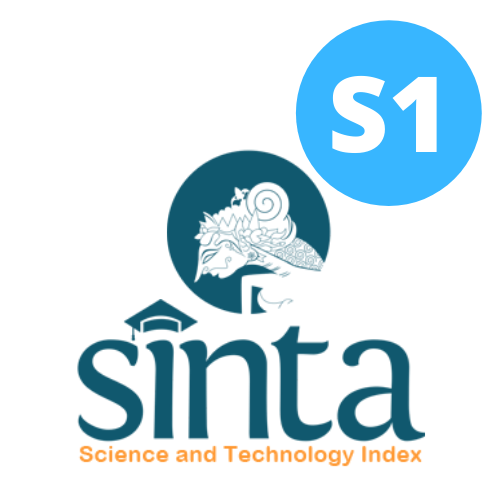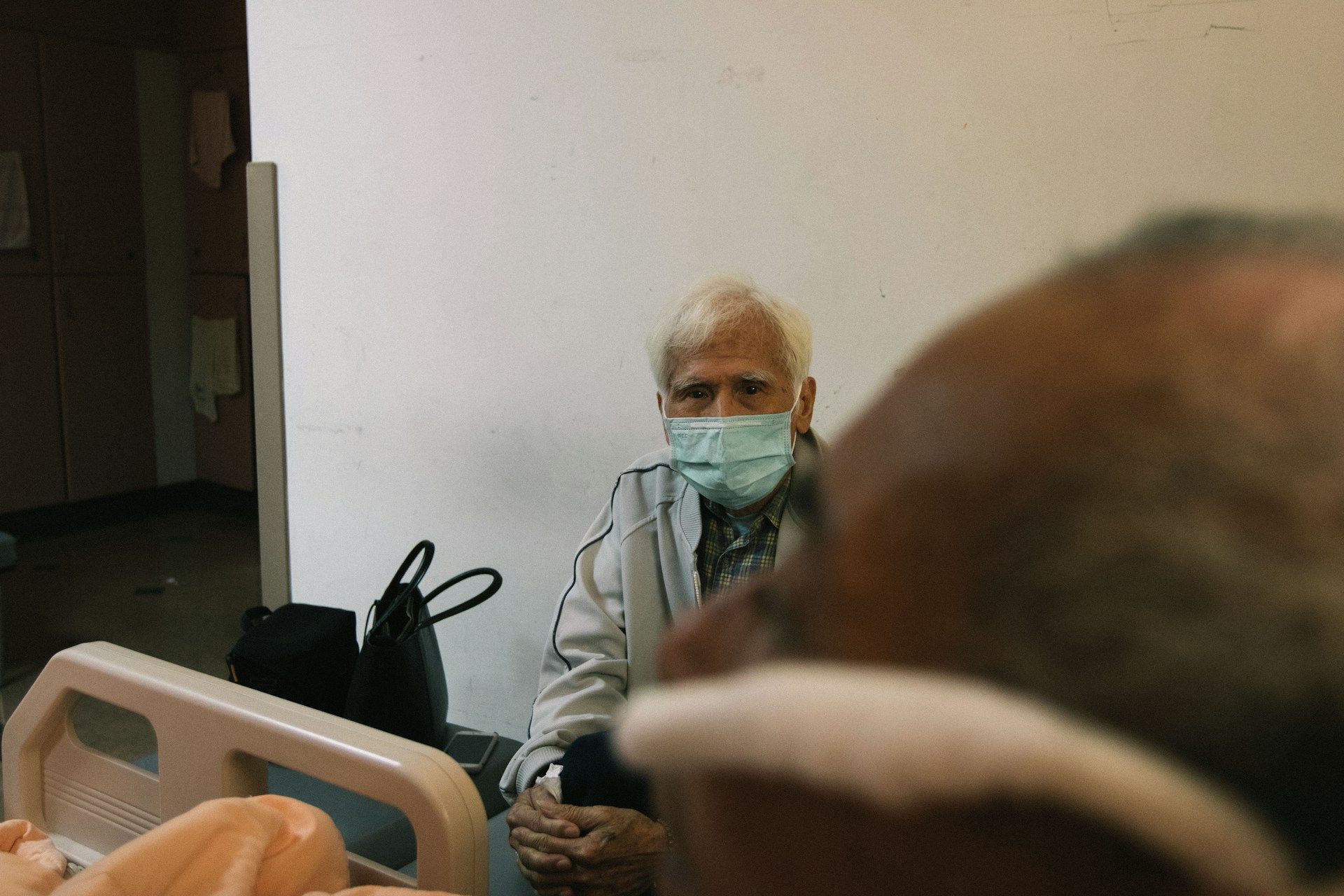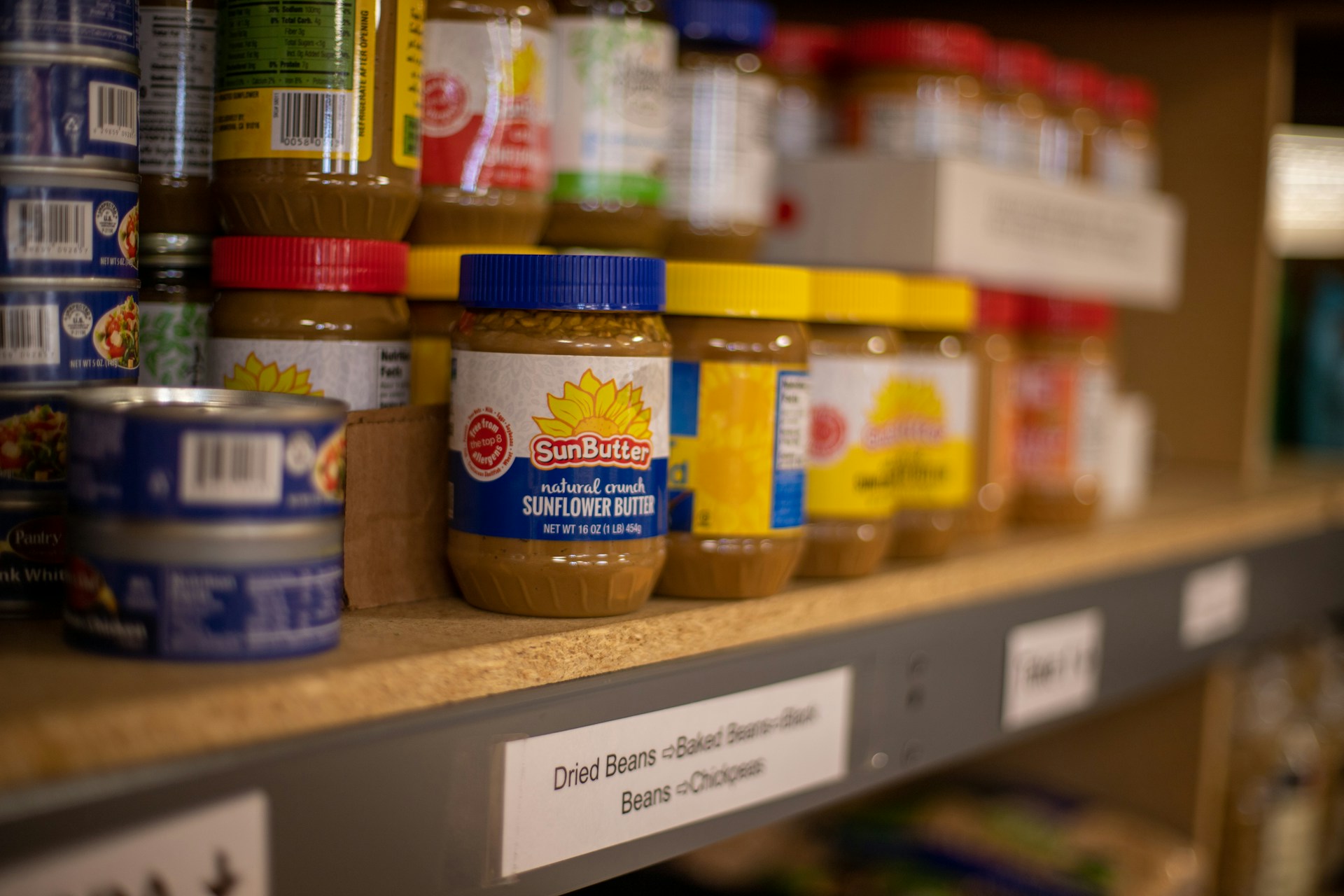Stunting and Dietary Diversity in Children 24-59 Months in Indonesia (Analysis of Indonesian Family Life Survey 2014-2015)
Stunting dan Keragaman Pangan pada Balita Usia 24-59 Bulan di Indonesia (Analisis Data Indonesian Family Life Survey Tahun 2014-2015)

Downloads
Background: Stunting is impaired growth and cognitive development that could decrease learning ability and productivity and increase morbidity and mortality. In 2018, 30.8% of children under the age of five in Indonesia were stunting. Chronic lack of nutrition as a cause of stunting is well known. However, the type of food that causes differences in the conditions between stunting and non-stunting children still needs further investigation. Dietary diversity is an indicator to identify the type and quality of food consumed.
Objectives: Analyzing the relationship between dietary diversity and stunting and determinants of stunting in children aged 24-59 months in Indonesia.
Methods: This was an observational study using a cross-sectional design. Secondary data from the (IFLS) 5 was used. Bivariate analysis was conducted using the chi-square test. Multivariate analysis used the logistic regression test. The subjects in this study were 2421 children aged 24-59 months.
Results: Bivariate analysis showed a significant relationship between dietary diversity and stunting. Significant relationships were found between meat, eggs, milk and its products, and vitamin A-rich vegetables and stunting. Multivariate analysis showed LBW, economic status, area of residence, and maternal education are predictors of stunting.
Conclusions: Dietary diversity, especially consumption of animal protein such as eggs, meat, fish, and milk could improve the quality of children’s diets. Improving the quality of diets could potentially reduce the risk of stunting. Therefore, efforts and strategies are needed to increase accessibility to various foods and increase nutritional knowledge.
World Health Organization. Childhood Stunting: Context, Causes and Consequences WHO Conceptual Framework. https://cdn.who.int/media/docs/default-source/nutritionlibrary/events/2013_childhoodstunting_colloquium_14oct_conceptualframework_bw.pdf?sfvrsn=7a0f8766_5 (2013).
Soliman, A. et al. Early and Long-term Consequences of Nutritional Stunting: From Childhood to Adulthood. Acta Biomedica 92, (2021). https://doi.org/10.23750/abm.v92i1.11346
Ministry of Health Republic Indonesia. Agency of Health Research and Development. National Health Survey (2023) in Number. https://www.badankebijakan.kemkes.go.id/ski-2023-dalam-angka/ (2023).
Food and Agriculture Organization. Guidelines for Measuring Household and Individual Dietary Diversity. (2013).
Motadi, S. A., Zuma, M. K., Freeland-Graves, J. H. & Gertrude Mbhenyane, X. Dietary Diversity and Nutritional Status of Children Attending Early Childhood Development Centres in Vhembe District, Limpopo Province, South Africa. J Nutr Sci 12, e92 (2023). https://doi.org/10.1017/jns.2023.78
Samosir, O. B., Radjiman, D. S. & Aninditya, F. Food Consumption Diversity and Nutritional Status among Children Aged 6-23 Months in Indonesia: The Analysis of The Results of The 2018 Basic Health Research. PLoS One 18, e0281426 (2023). https://doi.org/10.1371/journal.pone.0281426
Marinda, P. A., Chalula, F., Khayeka-Wandabwa, C., Audain, K. & Thilsted, S. H. Dietary Diversity and Nutritional Status of Children Aged 6–59 Months From Rural Fishing and Non-fishing Communities in Zambia. Sci Afr 19, (2023). http://dx.doi.org/10.1016/j.sciaf.2022.e01527
Center for Consumption Diversification and Food Security. Strategic Plan of the Center for Consumption Diversification and Food Security 2015-2019. (2020). https://badanpangan.go.id/storage/app/media/Evalap/renstra-bkp-2015-2019-revisi-iii-2.pdf (2015).
Food Security Agency of the Ministry of Agriculture. Direktori Perkembangan Konsumsi Pangan. https://ditjenpkh.pertanian.go.id/uploads/download/3e8f561f9e61f478b634605ccf1effb4.pdf (2021).
Ministry of Health Republic Indonesia. Regulation of the Minister of Health of the Republic of Indonesia Number 2 of 2020 Concerning Children's Anthropometric Standards. (2020).
Irmayanti, I., Farmawati, A. & Purba, M. B. Associations of Dietary Diversity Score, Obesity, and High-sensitivity C-reactive Protein with HbA1c. Makara Journal of Health Research 23, (2019). https://doi.org/10.7454/msk.v23i1.10438
Rahayu, H. K. et al. Animal Source Foods Consumptions on Complementary Feeding During COVID-19 Pandemic In Indonesia. Nutr Food Sci 54, 1309–1321 (2024). http://dx.doi.org/10.1108/NFS-02-2024-0033
Gao, Y. et al. Household Water Access, Dietary Diversity and Nutritional Status among Preschoolers in Poor, Rural Areas of Central and Western China. Nutrients 14, (2022). https://doi.org/10.3390/nu14030458
Trisasmita, L., Sudiarti, T., Dewi Sartika, R. A. & Setiarini, A. Identification of Dietary Diversity Associated with Stunting in Indonesia. Malays J Nutr 26, 085–092 (2020). http://dx.doi.org/10.31246/mjn-2019-0128
Roba, A. A., Başdaş, Ö., Brewis, A. & Roba, K. T. Maternal and Household Factors Affecting The Dietary Diversity of Preschool Children in Eastern Ethiopia: A Cross-Sectional Study. BMJ Open 14, e080616 (2024). https://doi.org/10.1136/bmjopen-2023-080616
Haque, S. et al. Factors Associated with Child and Maternal Dietary Diversity in The Urban Areas of Bangladesh. Food Sci Nutr 12, 419–429 (2024). https://doi.org/10.1002/fsn3.3755
Molla, W. et al. Dietary Diversity and Associated Factors among Children (6-23 Months) in Gedeo Zone, Ethiopia: Cross - Sectional Study. Ital J Pediatr 47, 233 (2021). https://doi.org/10.1186/s13052-021-01181-7
Headey, D., Hirvonen, K. & Hoddinott, J. Animal Sourced Foods and Child Stunting. Am J Agric Econ 100, 1302–1319 (2018). https://doi.org/10.1093/ajae/aay053
Asare, H., Rosi, A., Faber, M., Smuts, C. M. & Ricci, C. Animal-Source Foods as A Suitable Complementary Food for Improved Physical Growth in 6 to 24-Month-Old Children in Low- and Middle-Income Countries: A Systematic Review and Meta-Analysis of Randomised Controlled Trials. Br J Nutr 128, 2453–2463 (2022). https://doi.org/10.1017/s0007114522000290
Marinda, P. A., Genschick, S., Khayeka-Wandabwa, C., Kiwanuka-Lubinda, R. & Thilsted, S. H. Dietary Diversity Determinants and Contribution of Fish to Maternal and Under-Five Nutritional Status in Zambia. PLoS One 13, e0204009 (2018). https://doi.org/10.1371/journal.pone.0204009
Arthatiani, F. Y., Luhur, E. S., Wardono, B. & Yulisti, M. Socio-Economic Determinants of Preserved Fish Consumption in Java Island: SUSENAS Data Analysis 2019. IOP Conf Ser Earth Environ Sci 870, 012046 (2021). http://dx.doi.org/10.1088/1755-1315/870/1/012046
da Silva Dias, J. C. Nutritional and Health Benefits of Carrots and Their Seed Extracts. Food Nutr Sci 05, 2147–2156 (2014). http://dx.doi.org/10.4236/fns.2014.522227
Sedgh, G., Herrera, M. G., Nestel, P., el Amin, A. & W.Fawzi, W. Dietary Vitamin A Intake and Nondietary Factors Are Associated with Reversal of Stunting in Children. J Nutr 130, 2520–2526 (2000). https://doi.org/10.1093/jn/130.10.2520
Raifen, R., Altman, Y. & Zadik, Z. Vitamin A Levels and Growth Hormone Axis. Horm Res 46, 279–281 (1996). https://doi.org/10.1159/000185101
World Food Programme. Food Consumption Score: Construction of the FCS. https://documents.wfp.org/stellent/groups/public/ documents/ena/wfp196627.pdf. (2008).
Aryastami, N. K. et al. Low Birth Weight was The Most Dominant Predictor Associated with Stunting among Children Aged 12–23 Months in Indonesia. BMC Nutr 3, 16 (2017). https://doi.org/10.1186/s40795-017-0130-x
Ntenda, P. A. M. Association of Low Birth Weight with Undernutrition in Preschool-Aged Children in Malawi. Nutr J 18, 51 (2019). https://doi.org/10.1186/s12937-019-0477-8
Helmyati, S. et al. Predictors of Poor Neonatal Outcomes among Pregnant Women in Indonesia: A Systematic Review and Meta-Analysis. Nutrients 14, 3740 (2022). https://doi.org/10.3390/nu14183740
Ardiyani, V. D. Effects of Social Economics Changes on Children Health Status in Indonesia (IFLS 1993 – 2007). BMC Public Health 14, P3 (2014). https://doi.org/10.1186/1471-2458-14-S1-P3
Horta, B., Bahl, R., Martines, J. & Victora, C. Evidence on The Long-Term Effects of Breastfeeding: Systematic Reviews and Meta-Analyses. World Health Organization 1–52 (2007).
Rachmi, C. N., Li, M. & Baur, L. A. The Double Burden of Malnutrition in Association of South East Asian Nations (ASEAN) Countries: A Comprehensive Review of The Literature. Asia Pac J Clin Nutr 27, 736–755 (2018). https://doi.org/10.6133/apjcn.062018.02
Cruz, LMG. et al. Factors Associated with Stunting among Children Aged 0 to 59 Months from the Central Region of Mozambique. Nutrients 9, 491 (2017). https://doi.org/10.3390/nu9050491
Semba, R. D. et al. Effect of Parental Formal Education on Risk of Child Stunting in Indonesia and Bangladesh: A Cross Sectional Study. the Lancet 371, 1–13 (2008). https://doi.org/10.1016/s0140-6736(08)60169-5
Akram, R., Sultana, M., Ali, N., Sheikh, N. & Sarker, A. R. Prevalence and Determinants of Stunting Among Preschool Children and Its Urban–Rural Disparities in Bangladesh. Food Nutr Bull 39, 521–535 (2018). https://doi.org/10.1177/0379572118794770
Adenuga, W. U., Obembe, T. A., Odebunmi, K. O. & Asuzu, M. C. Prevalence and Determinants of Stunting among Primary School Children in Rural and Urban Communities in Obafemi Owode Local Government Area, Southwestern Nigeria. Ann Ib Postgrad Med 15, 7–15 (2017).
Rezaeizadeh, G. et al. Maternal Education and Its Influence on Child Growth and Nutritional Status during The First Two Years Of Life: A Systematic Review and Meta-Analysis. . EClinicalMedicine 71, 102574 (2024). https://doi.org/10.1016/j.eclinm.2024.102574
Bommer, C., Vollmer, S. & Subramanian, S. V. How Socioeconomic Status Moderates The Stunting-Age Relationship in Low-Income and Middle-Income Countries. BMJ Glob Health 4, e001175 (2019). https://doi.org/10.1136/bmjgh-2018-001175
Laksono, A. D., Wulandari, R. D., Amaliah, N. & Wisnuwardani, R. W. Stunting among Children Under Two Years in Indonesia: Does Maternal Education Matter? PLoS One 17, e0271509 (2022). https://doi.org/10.1371/journal.pone.0271509
Ciptanurani, C. & Chen, H.-J. Household Structure and Concurrent Stunting and Overweight among Young Children in Indonesia. Public Health Nutr 24, 2629–2639 (2021). https://doi.org/10.1017/s1368980021001385
Halli, S. S., Biradar, R. A. & Prasad, J. B. Low Birth Weight, the Differentiating Risk Factor for Stunting among Preschool Children in India. Int J Environ Res Public Health 19, (2022). https://doi.org/10.3390/ijerph19073751
Namiiro, F. B. et al. Nutritional Status of Young Children Born with Low Birthweight in A Low Resource Setting: An Observational Study. BMC Pediatr 23, 520 (2023). https://doi.org/10.1186/s12887-023-04356-9
Copyright (c) 2025 Amerta Nutrition

This work is licensed under a Creative Commons Attribution-ShareAlike 4.0 International License.
AMERTA NUTR by Unair is licensed under a Creative Commons Attribution-ShareAlike 4.0 International License.
1. The journal allows the author to hold the copyright of the article without restrictions.
2. The journal allows the author(s) to retain publishing rights without restrictions
3. The legal formal aspect of journal publication accessibility refers to Creative Commons Attribution Share-Alike (CC BY-SA).
4. The Creative Commons Attribution Share-Alike (CC BY-SA) license allows re-distribution and re-use of a licensed work on the conditions that the creator is appropriately credited and that any derivative work is made available under "the same, similar or a compatible license”. Other than the conditions mentioned above, the editorial board is not responsible for copyright violation.












































